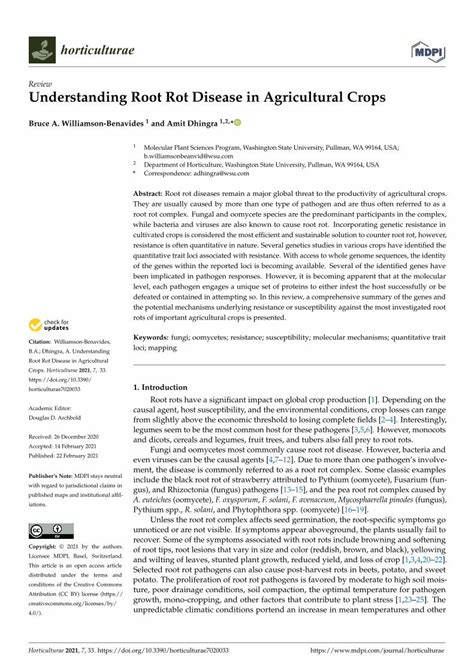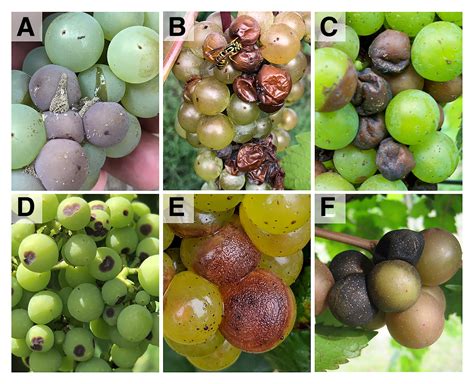goyard rot horizontal muster rot | Botrytis goyard rot horizontal muster rot There are several late-season rots that can affect grape berries, including Botrytis bunch rot, sour rot, black rot, Phomopsis fruit rot, bitter rot, and ripe rot. Tight-clustered . Applications & Forms. Below is the list of available applications. Please email us at [email protected] to request an application. Consumer Credit Application. Uniform Residential Loan Application.
0 · Understanding Root Rot Disease in Agricultural Crops
1 · Rotting Grapes Don’t Improve with Age: Cluster Rot Disease
2 · How to Prevent and Treat Botrytis Cinerea
3 · How to Fix and Prevent Root Rot: Master Techniques
4 · GRAY
5 · Disease Management–Botrytis
6 · Botrytis Infection: Grey Mould and Noble Rot
7 · Botrytis Blight of Greenhouse Crops
8 · Botrytis
The ST elevation is defined by ≥1 mm in at least two adjacent leads. The ST changes seen in early repolarization are different than the ST changes seen with acute ischemia/infarction that are due to current flow, called "injury current," across the area between ischemic and non-ischemic myocardium. 26Commonly the ECG findings are normal, or there may be evidence of LV volume overload and, rarely, myocardial ischemia. In an older patient with a coronary to right atrium fistula, atrial fibrillation may be present. Results of chest radiographs are usually normal, but there may be cardiomegaly or evidence of congestive heart failure.
Understanding Root Rot Disease in Agricultural Crops
Botrytis is a major disease threat as harvest approaches. Botrytis cinerea is a fungus that affects many plant species, especially wine grapes, where it is commonly known . This chapter provides an overview of the Botrytis cinerea disease cycle on grape, and the conditions inducing ‘bunch rot’ or ‘noble rot’ development. The complex factors .
Rotting Grapes Don’t Improve with Age: Cluster Rot Disease
What are the first signs that my plant might have root rot? Early signs of root rot include yellowing leaves, wilting, and stunted growth. If the plant feels loose in the soil and the .
There are several late-season rots that can affect grape berries, including Botrytis bunch rot, sour rot, black rot, Phomopsis fruit rot, bitter rot, and ripe rot. Tight-clustered .
Depending on the host and environmental conditions, Botrytis can cause leaf and flower blight, fruit rot, cankers, damping off, and root rot. Plants may be attacked at any stage but tender .
Botrytis bunch rot. Botrytis cinerea. Often the most common and damaging of the bunch rot diseases, botrytis bunch rot can significantly reduce yield and quality of both wine grapes and .
Crown rot poses a lethal challenge for both houseplants and outdoor plants. In this article, garden expert Christina Conner gives the rundown on what crown rot is, and how to .Gray-mold rot or Botrytis blight, caused by the widespread fungus Botrytis cinerea, affects most vegetable and fruit crops, as well as a large number of shrubs, trees, flowers, and weeds.
The most studied and problematic fungal root rots are the Rhizoctonia root rot, Fusarium root rot, Phoma root rot, and Black root rot. They account for incalculable yield .
How to Prevent and Treat Botrytis Cinerea
Botrytis cinerea is a necrotrophic fungus that affects many plant species, although its most notable hosts may be wine grapes. In viticulture, it is commonly known as "botrytis bunch rot"; in horticulture, it is usually called "grey mould" or "gray mold". The fungus gives rise to two different kinds of infections on grapes. Botrytis is a major disease threat as harvest approaches. Botrytis cinerea is a fungus that affects many plant species, especially wine grapes, where it is commonly known as Botrytis bunch rot or gray mold. This chapter provides an overview of the Botrytis cinerea disease cycle on grape, and the conditions inducing ‘bunch rot’ or ‘noble rot’ development. The complex factors governing host—parasite—environment interactions and the degree of susceptibility of grape to . What are the first signs that my plant might have root rot? Early signs of root rot include yellowing leaves, wilting, and stunted growth. If the plant feels loose in the soil and the roots are brown and mushy instead of firm and white, root rot is likely.

There are several late-season rots that can affect grape berries, including Botrytis bunch rot, sour rot, black rot, Phomopsis fruit rot, bitter rot, and ripe rot. Tight-clustered varieties such as ‘Pinot gris’, ‘Pinot noir’, and ‘Vignoles’ are particularly susceptible to cluster rots.Depending on the host and environmental conditions, Botrytis can cause leaf and flower blight, fruit rot, cankers, damping off, and root rot. Plants may be attacked at any stage but tender new growth, freshly injured tissues, and aging or senescent tissues are preferred.Botrytis bunch rot. Botrytis cinerea. Often the most common and damaging of the bunch rot diseases, botrytis bunch rot can significantly reduce yield and quality of both wine grapes and table grapes.
Crown rot poses a lethal challenge for both houseplants and outdoor plants. In this article, garden expert Christina Conner gives the rundown on what crown rot is, and how to identify and treat this disease
Gray-mold rot or Botrytis blight, caused by the widespread fungus Botrytis cinerea, affects most vegetable and fruit crops, as well as a large number of shrubs, trees, flowers, and weeds.
The most studied and problematic fungal root rots are the Rhizoctonia root rot, Fusarium root rot, Phoma root rot, and Black root rot. They account for incalculable yield losses across agricultural and horticultural crops.Botrytis cinerea is a necrotrophic fungus that affects many plant species, although its most notable hosts may be wine grapes. In viticulture, it is commonly known as "botrytis bunch rot"; in horticulture, it is usually called "grey mould" or "gray mold". The fungus gives rise to two different kinds of infections on grapes. Botrytis is a major disease threat as harvest approaches. Botrytis cinerea is a fungus that affects many plant species, especially wine grapes, where it is commonly known as Botrytis bunch rot or gray mold. This chapter provides an overview of the Botrytis cinerea disease cycle on grape, and the conditions inducing ‘bunch rot’ or ‘noble rot’ development. The complex factors governing host—parasite—environment interactions and the degree of susceptibility of grape to .
What are the first signs that my plant might have root rot? Early signs of root rot include yellowing leaves, wilting, and stunted growth. If the plant feels loose in the soil and the roots are brown and mushy instead of firm and white, root rot is likely. There are several late-season rots that can affect grape berries, including Botrytis bunch rot, sour rot, black rot, Phomopsis fruit rot, bitter rot, and ripe rot. Tight-clustered varieties such as ‘Pinot gris’, ‘Pinot noir’, and ‘Vignoles’ are particularly susceptible to cluster rots.
Depending on the host and environmental conditions, Botrytis can cause leaf and flower blight, fruit rot, cankers, damping off, and root rot. Plants may be attacked at any stage but tender new growth, freshly injured tissues, and aging or senescent tissues are preferred.Botrytis bunch rot. Botrytis cinerea. Often the most common and damaging of the bunch rot diseases, botrytis bunch rot can significantly reduce yield and quality of both wine grapes and table grapes. Crown rot poses a lethal challenge for both houseplants and outdoor plants. In this article, garden expert Christina Conner gives the rundown on what crown rot is, and how to identify and treat this diseaseGray-mold rot or Botrytis blight, caused by the widespread fungus Botrytis cinerea, affects most vegetable and fruit crops, as well as a large number of shrubs, trees, flowers, and weeds.
adidas pod-13.1olive grün

How to Fix and Prevent Root Rot: Master Techniques
GRAY
Disease Management–Botrytis
TPH Spectra® ST Universal Composite Restorative is available as HV (High Viscosity) and LV (Low Viscosity) viscosities for preferred handling. TPH Spectra® ST Effects is available as HV (High Viscos-ity) only. Both TPH Spectra® ST and TPH Spectra® ST Effects are available in: Predosed Compules® Tips. Syringes.
goyard rot horizontal muster rot|Botrytis


























